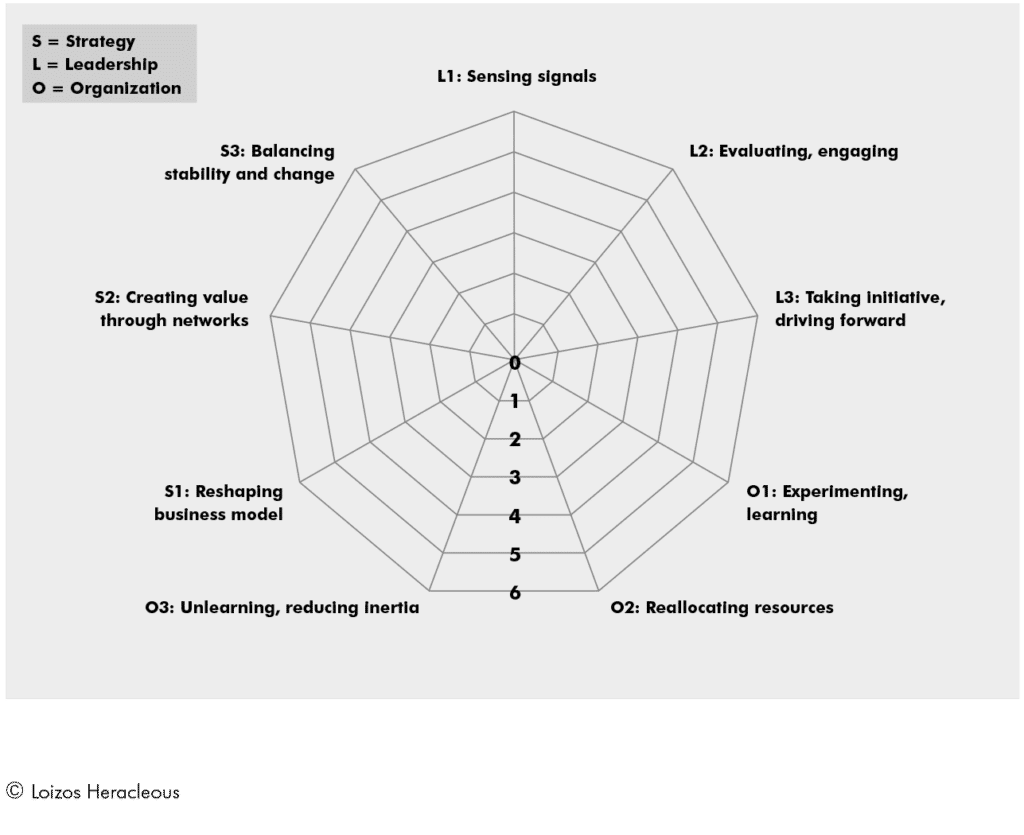
Agility is the fashion of the day. Companies in industries as diverse as information technology, finance, hospitality and manufacturing operate agility programmes. The challenge is, however, that nobody seems to have a clear idea of what agility is or what it entails; and those who do, tend to disagree with others in the know. This is hardly surprising given the multiple roots of agility. Becoming popular as a way to organise software coding efforts in a flexible, client-oriented and scalable way, agility was initially inspired by the Toyota Production System, the “rugby” approach to innovation, and even prior total quality management principles taught by Deming.
The “Agile Manifesto”, created in 2001 by 17 software engineers in Utah, codified some principles of software development such as “individuals and interactions over processes and tools”, “responding to change over following a plan” and “working software over comprehensive documentation”. These principles make sense, but they appear more operational and relevant to software development than assuaging the concerns of the strategist wondering how agile their organization is or what agile actually means from a strategic point of view.
In my work with organizations including NASA’s Johnson Space Center, I have developed a framework that can help to pin down agility for strategists and leaders. In 2014 the Johnson Space Center initiated a programme referred to as JSC 2.0 that aims to make the Center “more lean, agile and adaptive to change”. I created the SLO framework as a way to spur strategic conversations about what agility might mean and entail.
From the strategist’s point of view, agility is about one of the central challenges of organizations: adapting to changing circumstances. Leaders should be able to sense signals, evaluate them and take initiative; re-configure the organization accordingly and in alignment with the strategy, also subject to amendment as needed. Each of the three elements of strategy, leadership and organization (hence the SLO framework) is necessary but not sufficient; only synergy among the three can enable a company to be truly agile.
Agile leaders are those who can raise their perspective from the day-to-day, sense signals, reflect on the implications of those signals, and then spur initiatives to drive their organization to do what’s needed. A variety of organizational features such as routines, worldviews and sunk costs continuously operate against this process.
In this sense agile leaders are champions of questioning accepted truths. Elon Musk may be the archetype of such a leader. His initiatives in space exploration, electronic vehicles, solar energy and even tunnel-building in cities reveal his ability to read signals of what is needed and what is possible, work out the implications and then lead initiatives to take things forward, doing so in novel ways and surmounting obstacles that would stop others in their tracks.
From a strategic perspective, agile organizations are able to overcome inertia and reshape their business models, balance change and stability, and build inter-organizational networks to push forward learning and influence their environments. Re-shaping business models is most often a long-term task that entails ongoing commitment. IBM’s long-term shifts from a hardware producer to a solutions provider and currently to a “cognitive solutions and cloud platform provider” is one example. GE’s various strategic shifts over the decades, such as portfolio re-shaping, the move from a manufacturing focus to service businesses, and currently its focus on becoming a digital enterprise, is another. At a strategic level agility does not have to be immediate, and indeed it cannot be for large corporations. It takes time to change the direction of a steamer. Corporations require both periodic strategic changes over time, while at the same time re- configuring their operations to maintain efficiency and responsiveness; one manifestation of the elusive capability of ambidexterity.
Finally, organizational agility requires experimentation, cross-functional collaboration, re-allocation of resources to support exploration, learning, as well as active un-learning of routines and processes that are no longer relevant. Alphabet may be the archetype of an agile organization. A multitude of experiments take place; some fail (Google Glass, Dodgeball), some go on to create new multi-billion dollar markets (Google Search, Google Play), and some are emerging, showing immense promise (DeepMind, that will support a multitude of offerings supported by AI). Alphabet learns and also unlearns, shutting down experiments that don’t show results and reallocates resources to those that do. At any time, many flowers are allowed to bloom, and some of those will fill the valley.
 The framework, right, can allow strategists to evaluate their company’s agility levels and pinpoint where attention should be focused. The elements of the framework can spur strategic conversations about agility by asking the right questions about essential capabilities. These nine elements fit together like a jigsaw puzzle. Take one out, and the likelihood of achieving agility is diminished. The synergy across these components is what can lead to results. This framework boils down several agility-related concepts to their essence, in a way that can help strategists and leaders pin down what it means, evaluate their organization, and take action.
The framework, right, can allow strategists to evaluate their company’s agility levels and pinpoint where attention should be focused. The elements of the framework can spur strategic conversations about agility by asking the right questions about essential capabilities. These nine elements fit together like a jigsaw puzzle. Take one out, and the likelihood of achieving agility is diminished. The synergy across these components is what can lead to results. This framework boils down several agility-related concepts to their essence, in a way that can help strategists and leaders pin down what it means, evaluate their organization, and take action.
About the author
Loizos Heracleous is a professor of strategy at Warwick Business School and an associate fellow at Green Templeton College, University of Oxford. He earned his PhD from the University of Cambridge. He is the author of several books and co-editor of Agility.X (Cambridge University Press, 2018). More information about Loizos can be found at www.heracleous.org and @Strategizing.
This is an excerpt from Strategy@Work, a Brightline and Thinkers50 collaboration bringing together the very best thinking and insights in the field of strategy and beyond.

Thinkers50 Limited
The Studio
Highfield Lane
Wargrave RG10 8PZ
United Kingdom

Thinkers50 Limited
The Studio
Highfield Lane
Wargrave RG10 8PZ
United Kingdom

Thinkers50 Limited
The Studio
Highfield Lane
Wargrave RG10 8PZ
United Kingdom
| Cookie | Duration | Description |
|---|---|---|
| LANG | 9 hours | Linkedin set this cookie to set user's preferred language. |
| nsid | session | This cookie is set by the provider PayPal to enable the PayPal payment service in the website. |
| sp_landing | 1 day | The sp_landing is set by Spotify to implement audio content from Spotify on the website and also registers information on user interaction related to the audio content. |
| sp_t | 1 year | The sp_t cookie is set by Spotify to implement audio content from Spotify on the website and also registers information on user interaction related to the audio content. |
| tsrce | 3 days | PayPal sets this cookie to enable the PayPal payment service in the website. |
| x-pp-s | session | PayPal sets this cookie to process payments on the site. |
| __cf_bm | 30 minutes | This cookie, set by Cloudflare, is used to support Cloudflare Bot Management. |
| Cookie | Duration | Description |
|---|---|---|
| l7_az | 30 minutes | This cookie is necessary for the PayPal login-function on the website. |
| Cookie | Duration | Description |
|---|---|---|
| CONSENT | 2 years | YouTube sets this cookie via embedded youtube-videos and registers anonymous statistical data. |
| _ga | 2 years | The _ga cookie, installed by Google Analytics, calculates visitor, session and campaign data and also keeps track of site usage for the site's analytics report. The cookie stores information anonymously and assigns a randomly generated number to recognize unique visitors. |
| _gat_gtag_UA_10408481_1 | 1 minute | Set by Google to distinguish users. |
| _ga_ZP8HQ8RZXS | 2 years | This cookie is installed by Google Analytics. |
| _gid | 1 day | Installed by Google Analytics, _gid cookie stores information on how visitors use a website, while also creating an analytics report of the website's performance. Some of the data that are collected include the number of visitors, their source, and the pages they visit anonymously. |
| Cookie | Duration | Description |
|---|---|---|
| NID | 6 months | NID cookie, set by Google, is used for advertising purposes; to limit the number of times the user sees an ad, to mute unwanted ads, and to measure the effectiveness of ads. |
| test_cookie | 15 minutes | The test_cookie is set by doubleclick.net and is used to determine if the user's browser supports cookies. |
| VISITOR_INFO1_LIVE | 5 months 27 days | A cookie set by YouTube to measure bandwidth that determines whether the user gets the new or old player interface. |
| YSC | session | YSC cookie is set by Youtube and is used to track the views of embedded videos on Youtube pages. |
| yt-remote-connected-devices | never | YouTube sets this cookie to store the video preferences of the user using embedded YouTube video. |
| yt-remote-device-id | never | YouTube sets this cookie to store the video preferences of the user using embedded YouTube video. |
| yt.innertube::nextId | never | This cookie, set by YouTube, registers a unique ID to store data on what videos from YouTube the user has seen. |
| yt.innertube::requests | never | This cookie, set by YouTube, registers a unique ID to store data on what videos from YouTube the user has seen. |
| Cookie | Duration | Description |
|---|---|---|
| DEVICE_INFO | 5 months 27 days | No description |
| loglevel | never | No description available. |
| m | 2 years | No description available. |
Thinkers50 Limited has updated its Privacy Policy on 28 March 2024 with several amendments and additions to the previous version, to fully incorporate to the text information required by current applicable date protection regulation. Processing of the personal data of Thinkers50’s customers, potential customers and other stakeholders has not been changed essentially, but the texts have been clarified and amended to give more detailed information of the processing activities.